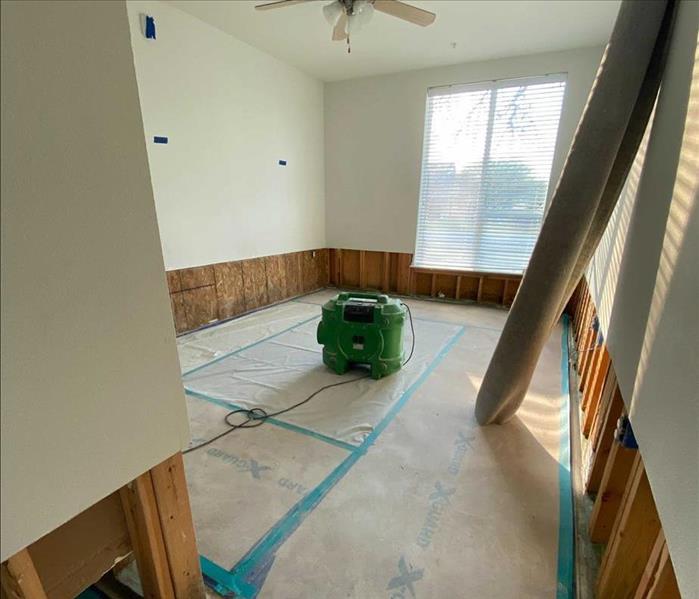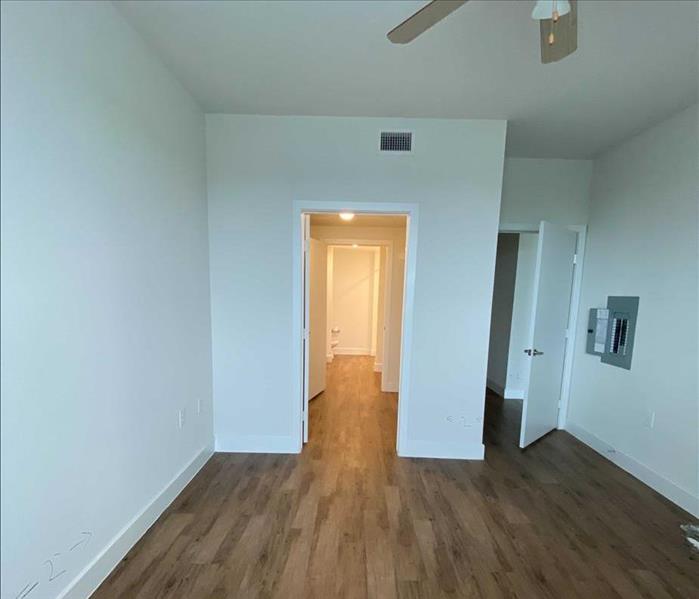Flooded Bedroom Containment
Moisture moves through areas of your home through many different ways. Liquid flow, air movement, capillary suction, and vapor diffusion.
1. Liquid flow. We most often observe moisture movement as water flows in liquid form. Liquid flow occurs as rainwater leaks through a roof, ground water soaks through a foundation, or water pours from a broken water pipe.
2. Air movement. Moisture in the air is carried by moving air. Air moves from high air pressure areas to low air pressure areas and brings moisture with it.
Moisture moves by airflow through cracks and small openings in a building’s envelope or as air pressure moves moist air through a chimney. Moisture and air moving from outside a building to the inside is called infiltration; moisture and air moving from inside to the outside is called exfiltration.
3. Capillary suction. Liquid moisture can move through a narrow pathway due to contact between the moisture and the surface of the path. Capillary suction allows liquid moisture to move through the pores of porous materials.
4. Vapor diffusion. Water vapor moves as a gas through materials. Water vapor moves from areas of high vapor pressure to areas of low vapor pressure.
Whether moisture moves through a material by vapor diffusion depends on whether differences in vapor pressure exist across the material. How fast moisture moves by vapor diffusion depends on how permeable the material is.




 24/7 Emergency Service
24/7 Emergency Service

